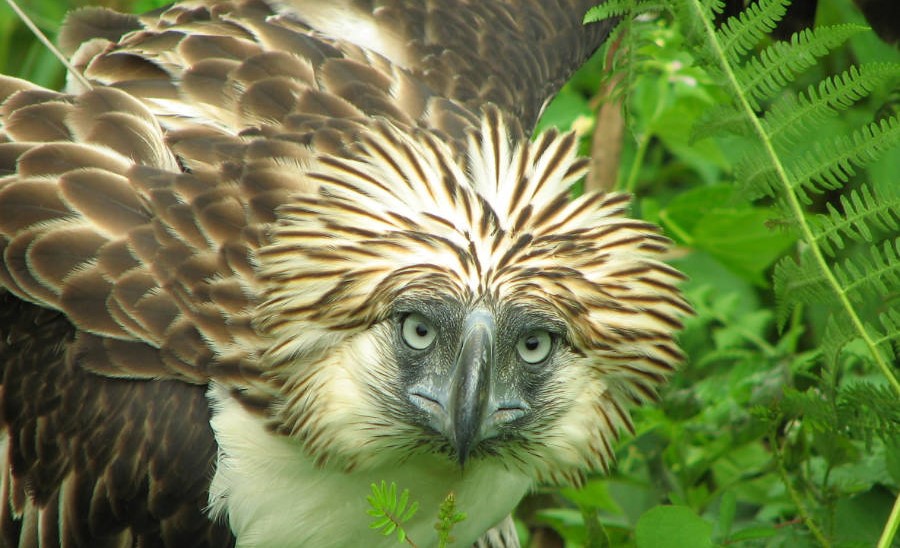Palawan, a tropical paradise renowned for its diverse ecosystems and stunning natural beauty, is a birder’s dream. This island province boasts a rich avifauna, including endemic species and migratory birds. From the towering limestone cliffs of El Nido to the lush rainforests of the interior, Palawan offers a variety of habitats that support a wide range of birdlife. Whether you’re seeking rare and elusive species or simply enjoy the thrill of spotting colorful birds in their natural environment, Palawan is sure to delight birdwatchers of all levels.

Table of Contents
sanctuary bird
Palawan’s diverse birdlife is a testament to its unique ecological characteristics. The island is home to a variety of endemic species, which can only be found here, as well as migratory birds that travel thousands of miles to reach its shores. From the colorful Palawan hornbill to the elusive Philippine eagle-owl, these feathered inhabitants contribute to the island’s rich biodiversity and ecological balance.

Here’s a detailed list of birds that you might encounter in Palawan, making it a birdwatcher’s paradise:
1. Palawan Peacock-Pheasant (Polyplectron napoleonis):
- Description:
- Known as the “Tandikan” in local language.
- Distinctive iridescent plumage with an elaborate eye-spotted tail.
- Endemic to Palawan, making it a sought-after species for birdwatchers.
2. Palawan Hornbill (Anthracoceros marchei):
- Description:
- Recognizable by its large size, dark plumage, and a prominent casque on its bill.
- Endemic to Palawan and nearby islands.
- Often seen in pairs or small groups flying between trees.
3. Philippine Cockatoo (Cacatua haematuropygia):
- Description:
- Also known as the Red-vented Cockatoo.
- Recognizable by its white plumage, red undertail, and curved crest.
- Endangered species, and conservation efforts are underway to protect its populations.
4. Blue-headed Racquet-tail (Prioniturus platenae):
- Description:
- Vibrant green plumage with a distinctive blue head.
- Endemic to Palawan and nearby islands.
- Often found in lowland forests and wooded areas.
5. Philippine Eagle (Pithecophaga jefferyi):
- Description:
- One of the largest and most powerful eagles globally.
- Recognizable by its striking appearance, with a large beak and a prominent crest of feathers.
- Critically endangered, with conservation efforts focused on its protection.
6. Pied Imperial Pigeon (Ducula bicolor):
- Description:
- Large pigeon with a contrasting black-and-white plumage.
- Often seen in flocks, flying gracefully between trees.
- Found in various habitats, including forests and coastal areas.
7. Chestnut-breasted Malkoha (Phaenicophaeus curvirostris):
- Description:
- Medium-sized bird with a distinctive chestnut-colored breast.
- Recognizable by its long tail and curved bill.
- Often found in dense forests and wooded areas.
8. Hooded Pitta (Pitta sordida):
- Description:
- Colorful bird with a black head, green body, and vibrant red and yellow underparts.
- Known for its distinctive call.
- Inhabits dense vegetation and is often found near water sources.
9. Palawan Tit (Periparus amabilis):
- Description:
- Small, lively bird with a black cap, white cheeks, and yellow underparts.
- Endemic to Palawan.
- Typically found in montane forests and forest edges.
10. Collared Kingfisher (Todiramphus chloris):
- Description:
- Medium-sized kingfisher with blue and white plumage.
- Often seen near water bodies, including rivers and coastal areas.
- Wide distribution across the Philippines.
11. Grey Imperial Pigeon (Ducula pickeringii):
- Description:
- Large pigeon with grey plumage and a contrasting white band on its tail.
- Typically found in lowland and montane forests.
- Feeds on fruits and seeds.
12. Philippine Frogmouth (Batrachostomus septimus):
- Description:
- Nocturnal bird with excellent camouflage resembling tree bark.
- Named for its large mouth, which it opens wide when threatened.
- Inhabits forests and wooded areas.
13. Rufous-headed Parrotbill (Paradoxornis ruficeps):
- Description:
- Small bird with a rufous crown and distinctive markings on its face.
- Typically found in grassy areas and open habitats.
- Moves in small flocks and feeds on seeds and insects.
Tips for Birdwatching in Palawan:
- Local Guides: Consider hiring local birdwatching guides who are familiar with the best locations and can help identify bird species.
- Binoculars and Field Guide: Carry binoculars and a field guide to birds for easier identification.
- Timing: Early morning and late afternoon are optimal times for birdwatching when many species are active.
- Quiet Observation: Birds can be easily startled, so practice quiet observation to avoid disturbing them.
- Respect the Environment: Follow ethical birdwatching practices, respecting the natural habitat and minimizing disturbances.
Palawan, a tropical island province in the Philippines, is renowned for its stunning natural beauty and rich biodiversity. For birdwatchers, this destination offers a truly captivating experience, with the opportunity to encounter a diverse array of avian species, including many that are rare or endemic to the region.
One of the most iconic birds found in Palawan is the Philippine eagle, the national bird of the Philippines. This majestic raptor is one of the largest eagles in the world and is considered critically endangered. While sightings are rare, encountering this magnificent bird in its natural habitat is a truly unforgettable experience.
In addition to the Philippine eagle, Palawan is home to a variety of other endemic species, such as the Palawan hornbill, the Palawan peacock-pheasant, and the Palawan bare-backed fruit dove. These unique birds can be found in the island’s diverse habitats, ranging from lush rainforests to coastal mangroves.
For those seeking to spot migratory birds, Palawan offers a prime location. The island is situated along a major migration route, and during certain times of the year, it can be a hotbed of avian activity. Visitors may encounter a variety of migratory species, including shorebirds, waterfowl, and raptors.
Beyond the rare and endemic species, Palawan also boasts a stunning array of common birds that are simply beautiful to behold. The island’s vibrant birdlife adds to its overall charm and allure, making it a must-visit destination for nature lovers and birdwatchers alike.
Whether you’re a seasoned birder or simply enjoy the beauty of nature, Palawan offers an unforgettable experience. With its diverse habitats, rich avian diversity, and stunning natural beauty, this tropical island is a true paradise for birdwatchers.

Whether exploring the forests, coastal areas, or highlands, the island provides a rewarding experience for those who appreciate the beauty and diversity of birdlife.

